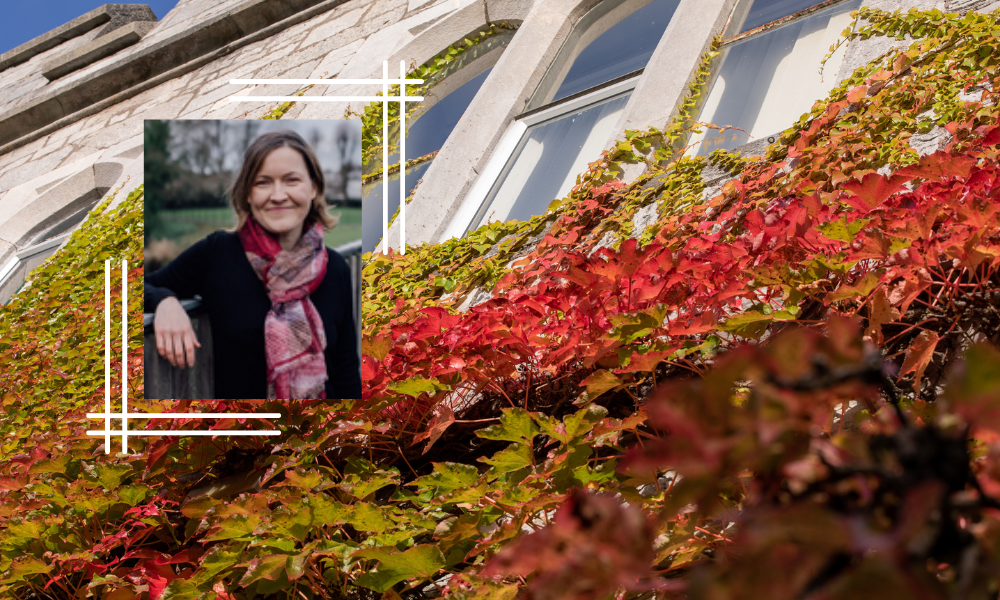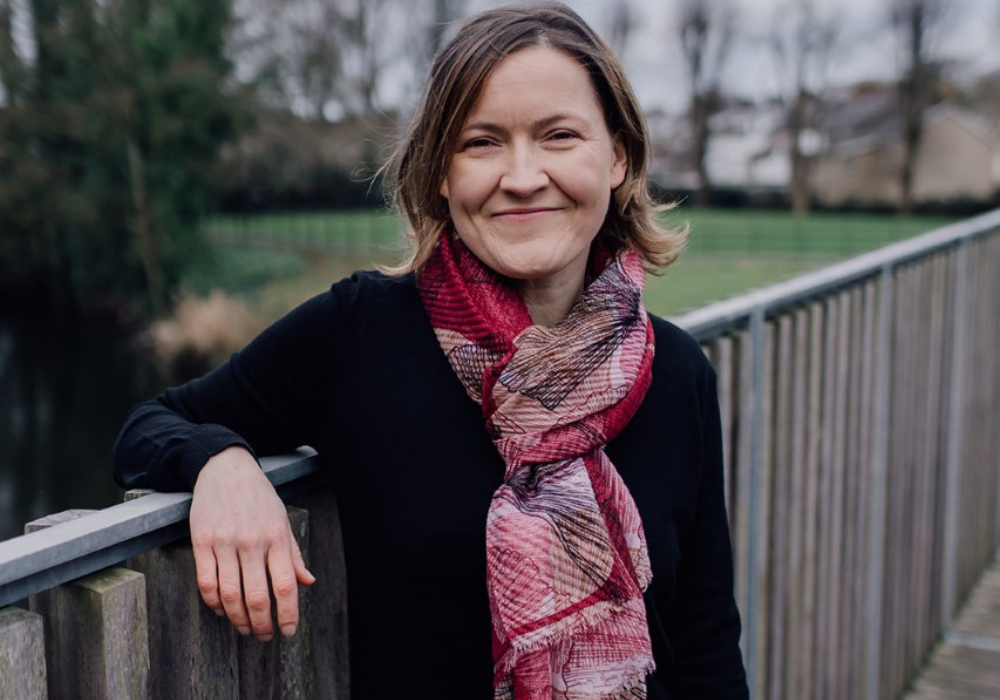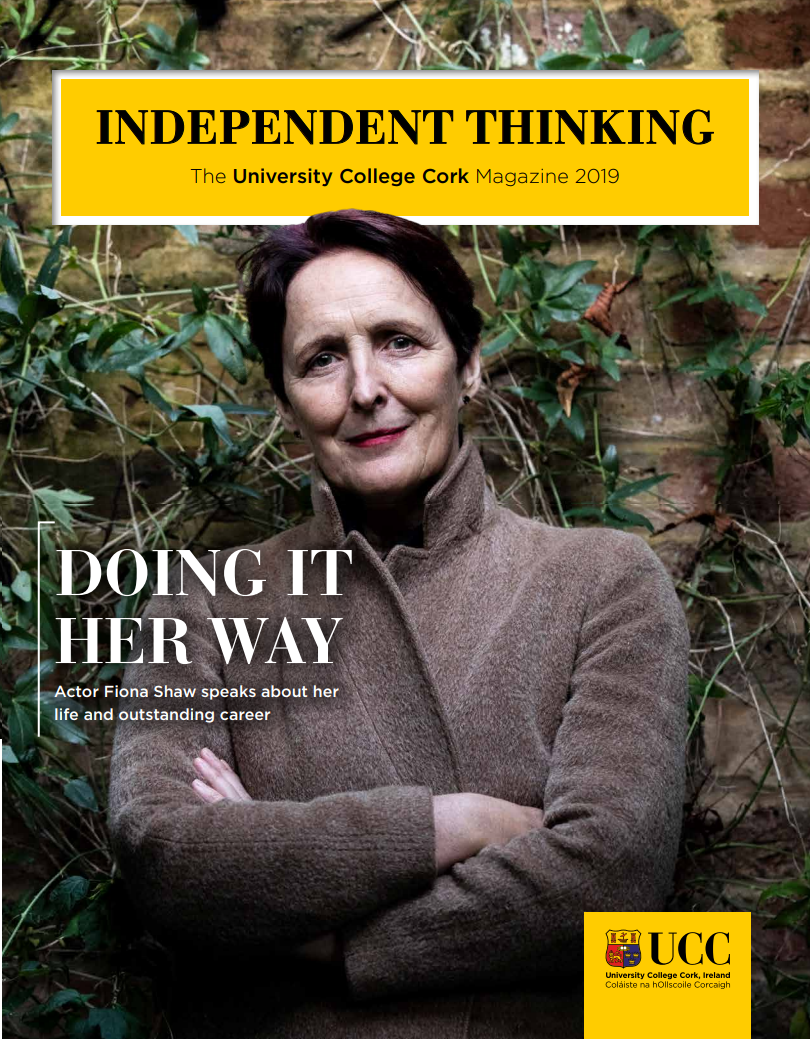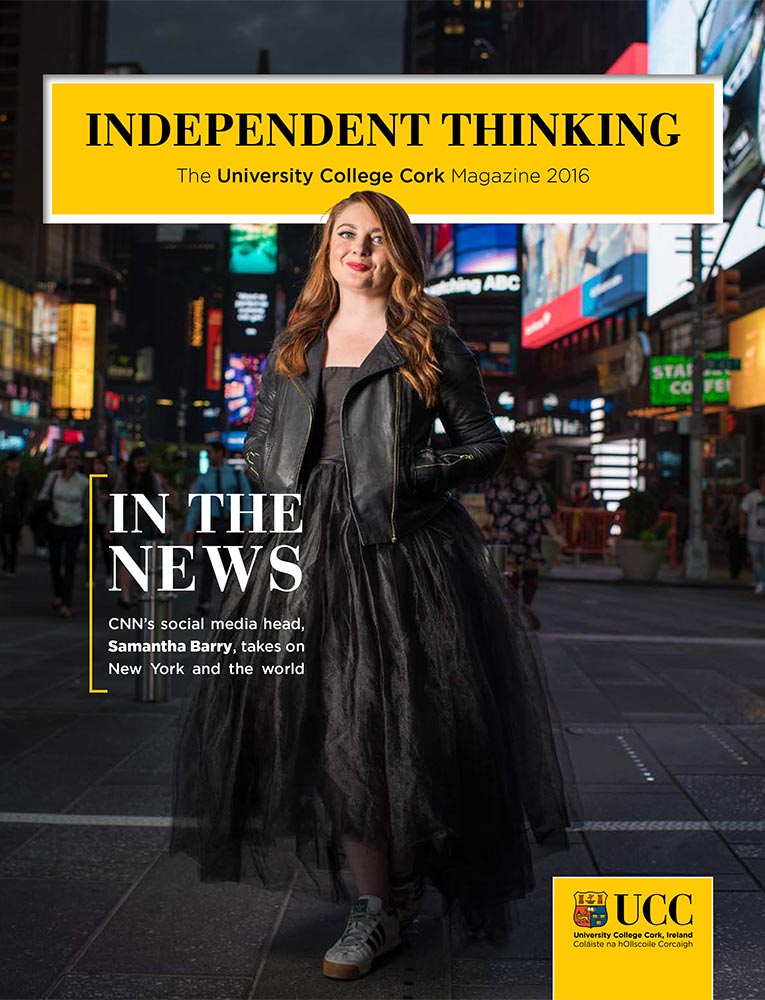Features
- President's Welcome
- Breaking News and Shattering Ceilings
- The Future Is Bright
- Her Next Act
- Márta: Mí na Féile Pádraig
- Bucking Convention: the Rising Power of Youth Climate Activism
- Opinion: Parenting Between Two Cultures
- Sigerson Glory for the Skull-and-Crossbones
- Analogue Love Stories
- Self-Care to Sustainability: the PG Expo Returns to Campus
Bucking Convention: the Rising Power of Youth Climate Activism
Dr Aoife Daly is a human rights law academic specialising in children’s rights. Following her recent awarding of prestigious European Research Council funding, Dr Daly shares an insight into her research on the growing trend of child and youth climate activism, and its impact on our legal landscape.

Children have been a powerful voice in holding governments to account in the climate crisis. My European Research Council-funded project seeks to examine the influence of their action on legal systems and communities, and what that means for those of us who research children’s rights.
We are faced with a global environmental crisis, involving global heating and the rapid degradation of ecosystems. The Intergovernmental Panel on Climate Change outlined in a 2022 report that global heating due to human activity has already guaranteed irreversible damage. These issues are children’s rights issues for a number of reasons. Children will be the adults who have to deal with the much more severe consequences of environmental crises in years to come. These consequences will likely include food and water shortages, increasingly frequent and severe weather events, rising sea levels, and infectious diseases.
To put the temporal issue into context, Greta Thunberg outlines that, though the year 2050 may appear to be far away, by then young people such as herself will likely still have half their lives to go. As Davies notes, ‘climate change is often seen as an issue of intergenerational equity—consumption now creates costs for future generations’.
Children’s rights are the concern of every state in the world. In the 1980s, nations came together to draft the UN Convention on the Rights of the Child, a legal instrument which sets out basic human rights for every child. It is the most ratified of all UN human rights instruments, with almost every country agreeing to abide by it. There are numerous rights in this instrument which relate to environmental issues.
Children have the right, under the UN Convention on the Rights of the Child, to have their interests adequately considered when governments are making decisions that affect children (Article 3), and they have the right to be heard in all matters affecting them (Article 12). Children also have the right to the highest standard of help, including the right to freedom from environmental pollution (Article 24). It is now globally recognised that children’s views and perspectives greatly enhance policy and planning, and there is much that adults can learn from them.

The value of the views and actions of children has been seen in a particularly powerful way in the past few years. Young climate activists have organised and protested online and in the streets, accessing national committees and courts, and bringing UN petitions. Sixteen children, for example, including Greta Thunberg, brought a petition before the UN committee on the rights of the child (the implementing body for the UN Convention on the Rights of the Child) against a number of governments, arguing that the failure to curb emissions has violated their rights under the Convention.
Here is part of the statement from 17-year-old Alaskan petitioner Carl Smith, of the Yupiaq tribe, who explained how global heating is destroying his people’s way of life: ‘The warming temperatures are making hunting and fishing more difficult. For example, last year, Carl’s family did not catch any caribou, which only pass by the Yupiaq hunting region from November to December each year. Carl explained that the river must freeze solid in order for the hunters to access their hunting grounds, and last year it did not get cold enough to freeze the river in time.’
Many argue that, in spite of the ground-breaking nature of the UN Convention on the Rights of the Child, adults often interpret and use it in a way which is unduly focused on adults ‘protecting’ children’s rights or ‘giving’ them their rights (this can be referred to as paternalism). Therefore, this global leadership by children in the face of the unprecedented threat to humanity is a new departure and an exciting phenomenon.
My research examines whether we are in what I am referring to as a ‘post-paternalist’ time for the CRC, involving grassroots action from children (for the first time, on a global scale), rather than well-meaning adults giving children their rights. It involves talking to children and youth around the world who are taking climate cases, as well as those taking community action.
In the preparation of the application for this research project, I spoke to a number of children in different countries. They were united in their commitment to take action on the climate crisis, for example: ‘Children are united in a common problem – we are committed together online’ (Chantin, Nepal, age 14). ‘In seven years, things will be irreversible. We have to do things NOW. Adults in power … We need to talk now.’ (Ethan, UK, age 15).
Children and youth have been working together to tackle government inaction on climate change. It is extraordinary to see children taking cases not just in national courts but at UN level. Children and youth have often been involved in social change, from fighting Apartheid in South Africa to Malala Yousafzai's campaign for girl's education in Pakistan. Yet with climate activism they are organizing on a global scale to do this. It is incredibly exciting to conduct research on what the consequences of this could be; to discover what climate justice means for children, and what this new era might mean for the UN Convention on the Rights of the Child.
Visit the dedicated UCC Research and Innovation website for more information.
Photography: Tanya Colclough



